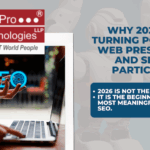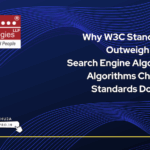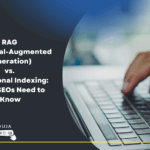The search landscape is shifting. With the rise of AI-driven search engines like Google AI Overviews, ChatGPT, and Perplexity, the retrieval process is no longer limited to static indexes. Instead, RAG (Retrieval-Augmented Generation) has emerged as a hybrid approach that combines the reasoning power of Large Language Models (LLMs) with the precision of external data retrieval.
The rise of Retrieval-Augmented Generation (RAG) is not a minor matter; it's a fundamental shift that reshapes strategy from keyword-centric to entity- and authority-centric. This means moving beyond optimizing for individual search terms and focusing on becoming a credible, comprehensive source of information on a given topic.
This evolution has huge implications for SEO strategy, content optimization, and brand visibility. In this post, we’ll explore what RAG is, how it differs from traditional indexing, and what SEOs need to know to adapt.
Traditional search is like a library where SEOs ensure their books are well-indexed and easy to find, while LLMs are like research assistants where SEOs must make sure their content is quoted, summarized, and trusted in the assistant’s answers.
- Traditional Indexing: The SEO Backbone
Traditional search relies on a fairly structured pipeline:
- Crawling – Search engine bots discover content by following links.
- Indexing – Discovered pages are stored in an inverted index—a massive keyword-to-document map.
- Ranking – Algorithms determine which indexed documents best match a query, using signals like relevance, freshness, and authority.
Why it worked well:
- Fast keyword-based lookups.
- Ranking based on hundreds of signals.
- Stable framework for SEO strategies (on-page, off-page, technical SEO).
Limitations:
- Keyword dependence often misses semantic meaning.
- Information overload (millions of results for simple queries).
- Static updates—freshness depends on crawl frequency.
Example: A query like “best SEO audit tools 2025” yields a list of URLs. You, the user, must click, read, and synthesize the answer yourself.
- What is Retrieval-Augmented Generation (RAG)?
LLMs like GPT-4, Claude, or Gemini are powerful but limited. Their “knowledge” is bound to their training cutoff, and they can hallucinate facts. Enter RAG.
RAG combines two steps:
- Retriever → Finds relevant external documents using vector embeddings (semantic search instead of keyword search).
- Generator → The LLM uses those documents to generate a context-aware, natural-language answer.
Why it matters:
- Pulls in fresh, real-time data.
- Reduces hallucinations.
- Provides citations or references.
- Synthesizes multiple sources into a single coherent response.
Example: Perplexity AI answering, “What’s new in Google’s AI Overviews?” by retrieving recent articles, then generating a concise, referenced summary.
- RAG vs. Traditional Indexing: A Side-by-Side Comparison
RAG vs. traditional indexing: A detailed comparison
| Aspect | Traditional Indexing | Retrieval-Augmented Generation (RAG) |
| How it works | Search engines crawl, index, and rank web pages primarily based on keywords, backlinks, and on-page signals. The search results page (SERP) is a list of links to pages. | An AI model first retrieves relevant information from a knowledge base (an index of documents). It then uses a Large Language Model (LLM) to generate a synthesized, conversational answer based on that retrieved content. |
| Search result format | A ranked list of pages, often with accompanying meta descriptions and, in some cases, rich snippets. | An AI-generated answer box, often displayed prominently at the top of the SERP. The answer may include citations linking back to the original source pages. |
| Core focus | Keywords and relevance signals. Optimizing for search volume, keyword difficulty, and keyword density. | Entities, topical authority, and user intent. The goal is to provide comprehensive answers, not just match keywords. |
| The role of content | Pages are built to rank for specific keywords and capture a click. | Content serves as the authoritative source material that an AI can use to construct an answer. The objective is to be the "trusted source" that an AI will cite. |
| SEO success metrics | Primarily, success is measured by keyword rankings and organic click-through rates (CTR). | Visibility is measured by becoming the cited source in AI-generated answer boxes, as the user may not need to click through to find the answer. Other metrics include topical authority score and multi-channel discovery. |
- Why SEOs Should Care
RAG changes the discovery game. Instead of aiming solely for rankings, SEOs must adapt to new factors that influence whether their content gets retrieved and cited by AI systems.
Key takeaways:
- Entity-first SEO matters more
Search is moving beyond keywords to entities, relationships, and context. - Structured, chunkable content wins
AI retrieves snippets in chunks. Clear sections, FAQs, and concise explanations increase your chances of being used. - Authority and credibility are paramount
LLMs are trained to avoid spammy sources. Well-referenced, expert content stands out. - Citations drive visibility, not just clicks
Even if CTR declines, being cited in an AI answer boosts brand trust and recognition.
- How to Optimize for a RAG-Driven World
Here are actionable steps:
- Write for Semantic Retrieval
- Focus on topics, not just keywords.
- Use synonyms, related terms, and entities.
- Create content that answers questions contextually.
- Structure for Chunkability
- Break long content into digestible sections with H2/H3 headings.
- Use bullet points, tables, FAQs.
- Ensure each section can stand alone.
- Use Schema & Metadata
- Add structured data to clarify context.
- FAQs, HowTo, and Article schema help AI retrieval.
- Build Topical Authority
- Cover topics comprehensively across multiple posts.
- Interlink related content to signal depth.
- Stay Fresh
- Regularly update content.
- AI prefers recent, relevant data—especially for fast-changing industries.
- Encourage Trusted Citations
- Publish research, original insights, and case studies.
- Get mentioned on AI-friendly platforms like Wikipedia, GitHub, academic papers, and authoritative blogs.
- The Impact on Analytics & SEO Metrics
Traditional SEO relies on clicks, impressions, and traffic. But in an AI-first world:
- Zero-click searches will rise (AI answers without traffic).
- New metrics to watch:
- Mentions/citations in AI answers.
- Share of voice in conversational search.
- Engagement with branded queries post-AI exposure.
Example: A user sees your brand cited in a Perplexity answer → later Googles your brand directly → traffic attribution shifts.
- The Future: Hybrid Search
We’re entering an era of hybrid models. Google AI Overviews, for example, still rely on traditional indexing and generative AI. Expect:
- Traditional SERPs for navigational queries.
- RAG-based answers for exploratory and complex queries.
- More conversational search experiences across platforms.
For SEOs, this means dual optimization:
- Continue traditional ranking strategies.
- Simultaneously optimize for AI-driven retrieval.
Point To Ponder On...
RAG is not replacing traditional indexing—it’s augmenting it. For SEOs, this is both a challenge and an opportunity.
- Traditional ranking factors still matter, but semantic relevance, authority, and structured content are becoming the new game-changers.
- Visibility is no longer just about clicks—it’s about being retrieved, cited, and trusted in AI-powered answers.
- The winners will be brands that think beyond traffic, focusing on long-term authority, trust, and digital presence.
The search journey has always evolved—from directories to search engines, from blue links to snippets, and now from indexes to AI-driven answers. SEOs who understand and embrace RAG + indexing as a hybrid reality will stay ahead of the curve.
September 27, 2025







